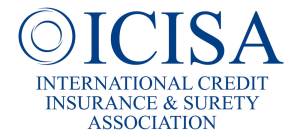Days Sale Outstanding (DSO) – Definition and Uses


Access trade, receivables and supply chain finance
We assist companies to access trade and receivables finance through our relationships with 270+ banks, funds and alternative finance houses.
Get startedContent
Days sales outstanding is an important element in the cash conversion cycle for every business and plays a significant role in improving a business’s cash flow. What does day sales outstanding therefore mean? Days sales outstanding is the average number of days a business takes to collect payments from its customers after a sale have been completed. Simply stated, days sales outstanding is the average number of days a business converts its credit sales to cash or how long it takes the business to collect its accounts receivables.
This average is usually calculated on a monthly, quarterly, or yearly basis and a higher days sales outstanding average indicates that a business is taking longer to collect money for goods and services sold to customers on credit.
What is the difference between Days Sales Outstanding (DSO) and Days Payable Outstanding (DPO)?
A distinction should be made between days sales outstanding (DSO) and days payable outstanding. Days payable outstanding represents the average number of days it takes a business to pay its invoices to suppliers or vendors and its bills to creditors or financiers. Simply stated, it is the average number of days a business takes to pay its accounts payables.
The days payable outstanding average is usually calculated on a monthly, quarterly, or yearly basis and a higher days payable outstanding average indicates that a business is taking longer to pay its invoices and bills. A higher days payable outstanding can also be a warning sign indicating that the business is unable to pay its bills on time.
Formula for Calculating Days Sales Outstanding
Days sales outstanding can be calculated by dividing the total accounts receivables by the total credit sales then multiplying the result by the number of days in the period under review. The period under review could be 30, 90 or 365 days.
For example, if a business has an accounts receivables total of $50,000 in its balance sheet and annual revenue of $500,000, the formula for calculating DSO would be:
The days sales outstanding for this business would be 36.5 which indicates that the business takes about 36 days to collect cash for goods and services sold on credit.
Importance of Days Sales Outstanding
Calculating and constantly tracking a business’s days sales outstanding is important for measuring the business’s liquidity and cash flow position. Cash is important in any business and it therefore paramount that a business collects its accounts receivables as quickly as possible.
Days sales outstanding is a metric used by businesses to evaluate if the business’s credit and collection efforts are efficient and effective. It shows how quickly a business can collect outstanding accounts receivables and reinvest that money into the business for continued sales and growth. By closely monitoring the business’s days sales outstanding metrics for a period of time, business executives can determine whether the business is getting more or less efficient and effective over time. They can also determine whether the business’s credit and collections policies need to be adjusted. Business executives can also evaluate how economic conditions are affecting the business’s performance.
Businesses can also use days sales outstanding metrics to monitor their individual customers. Monitoring and tracking an individual customer’s payment patterns can help the business figure out whether the customer is having cash flow issues that affect payment of invoices due to the business. This helps the business understand what the impact of a customer having cash flow problems has on the business and their relationship as well. Using the days sales outstanding metrics might inform the business to make changes in the credit and payment terms extended to different customers.
Days sales outstanding is also a good measure of healthy customer relationships. Businesses with good cash flow may be an indication that they are protected from payment delays or defaults by credit insurance. Such businesses may choose to offer long payment terms to customers to support their liquidity and enable ongoing business in the long term.
What is a Good Days Sales Outstanding Indicator?
The days sales outstanding is a good indicator of how a business manages its accounts receivables. Businesses are almost certain that they will receive their outstanding receivables. However, the important thing for any business is how quickly it receives this money and utilises it for ongoing business. A business could lose money if it spends a lot of time waiting to get paid for its outstanding receivables.
Higher Days Sales Outstanding Number?
A higher days sales outstanding number indicates that a business is selling its goods and services on credit to its customers and taking a long period of time to collect that money. The effect of taking long to collect money from credit sales means that the business will have cash flow problems.
Large businesses may not have serious cash flow problems with a higher days sales outstanding number because of the volume of transactions or sales they handle in any particular period. Small businesses however may have serious cash flow problems if they have a high days sales outstanding number, because such small businesses rely on quickly collecting of money to make payments for their operational expenses such as utilities and salaries.
Lower Days Sales Outstanding Number?
A low days sales outstanding number indicates that a business takes a short period or fewer days to collect cash from its credit sales. This is usually a good sign because the business collects cash sooner from its customers and is able to utilise that cash for its operations.
A low days sales outstanding number may also be a sign that a company has a rigid and strict credit policy which maybe discouraging to its customers. This leads to strained relationships with customers and might therefore affect the performance of the business. A business can avoid such a scenario while maintaining a low days sales outstanding value by offering discounts to customers who pay earlier than their due dates.
Days sales outstanding has its own limitations when it comes to using the metric to analyse the financial status of a business.
It is important to note that days sales outstanding is not the perfect indicator of a business’s accounts receivable efficiency. Fluctuating sales volumes can affect a business’s days sales outstanding. An increase in sales usually lowers the day’s sales outstanding average. Days sales outstanding should not be used alone to evaluate a business’s financial status. Other accounting metrics should be used as well.
Also, days sales outstanding is also not useful in analysing businesses with a significant amount of sales made in credit, compared to companies with a low proportion of credit sales. A company with a high proportion of credit sales does not necessarily mean that it has a poor bad cash flow, and such this metric cannot be used to compare companies with low and high proportions of credit sales.
How to Reduce Days Sales Outstanding for Better Cash Flow
A reduced days sales outstanding average indicates that a business is in a good cash flow position. Cash is the lifeline of every business and therefore it is important to reduce the amount of time it takes to collect accounts receivables.
There are various strategies which businesses can employ to reduce their days sales outstanding for better cash flow. These are discussed below.
- Analyse Current Days Sales Outstanding Status
A business that is keen on reducing its days sales outstanding should begin by collecting data about its current days sales outstanding status. This data should be analysed by creating a benchmark that shows the business’s level of days sales outstanding average and how it compares to other businesses in the same industry and of similar stature.
This insight provides a starting point for evaluating the business’s days sales outstanding and also provides an idea of what days sales outstanding average is achievable for the business. This data can be used by the business’s accounting executives to make a case for prompt collection of accounts receivable and reducing the days sales outstanding to the senior management or business owners. The business’s management can make a justification for devoting resources to improving the accounts receivables management and collection process.
- Incentives for Early Payments
A business can increase its cash flow by offering its customers incentives for making early payments. Discounts for early payments are known to hasten the payment process. These discounts can be offset easily by increasing cash flow, savings on loan fees as well as more discounts from creditors. A business can reduce its days sales outstanding by communicating and informing its customers of these incentives so that they would not need to be reminded or prompted to make early payments.
- Penalties for Late Payments
A business can also reduce its days sales outstanding average and improve its cash flow by penalising those customers who are consistently late with making payments. This can be done by ensuring that invoices contain late fee terms and conditions so that the customers are well aware about them from the onset.
- Offer More Payment Options
By offering customers a variety of payment options, a business can get paid faster because the customers will choose the method of payment that is convenient for them. Different payment options that can get a business paid quicker include, card payment, online payment and bank transfers. These should compliment the conventional methods of payment such as cash and cheques.
- Automating Invoicing
A business can reduce its days sales outstanding for better cash flow it invests in an online invoicing and billing software. Having an online invoicing system will allow a business to be organised and systematic in the way it issues invoices to its clients and collects payment. With such a system, a business can issue an invoice to a client as soon as a sale has been made thus reducing delays in collecting payments. A delay in sending invoices to customers has a net effect of delaying payments further.
An automated invoicing software allows a business to track payment status as well as send out to customers automated payment reminders. It also allows a business to customise its invoices according to its individual customers. An online or automated invoicing system will help the business collect payments faster and in effect reduce its days sales outstanding.
- Letting Go Of Bad Customers
A business that has customers who consistently delay, or refuse make on payments on time will definitely have cash flow problems. It is therefore important for a business to re-evaluate its relationship witch such type of customers because the cost of retaining that customer will not be helpful to the business in the long run. Bad customers will affect the days sales outstanding and therefore have an impact on a business’s cash flow.
- Saving Customers’ Credit Card Details
A business that offers digital recurring services to its customers can make sure they pay on time by saving or storing their credit card details. This ensures that the customers are charged immediately their invoices become due. It is however important for a business to inform its customers of this policy beforehand and obtain their consent. It is also important to notify them before and after charging their credit cards.
- Managing the Invoicing Process
Accounting processes that are slow, inefficient or ineffective also have a negative impact on the days sales outstanding of a business. Therefore, in order to reduce the days sales outstanding and improve a business’s cash flow, focus should be on making sure that invoices are going out promptly and on time. The business should ensure that the invoices contain all the necessary information, and they do not have errors.
A comprehensive review of the entire billing and invoicing process can reveal errors or mistakes that can delay payment. Some of the common errors that can delay payments include wrong mailing addresses, incorrect charges and invoices that do not indicate agreed discounts.
A business that would like to improve its cash flow by reducing its days sales outstanding average should regularly review and update invoicing policies and process particularly on when to send invoices to customers and ensure that those policies are strictly followed. The business should also regularly audit the invoicing processes to identify any possible delays or errors.
- Managing the Accounts Receivable Process
A business without a plan for following up on outstanding invoices cannot have a good and steady cash flow. There needs to be a proper plan for following up on payments once an invoice has been sent to a customer. The accounts receivable process should have a communication component that focuses on identifying any problems or challenges that are hindering the customer from settling the invoice on time. Sometimes an otherwise good customer could be having cash flow problems which are affecting his or her settlement of invoices. Good communication between the business and the customer can identify these challenges and allow the business to provide a special payment plan for that customer.
If the non-payment by the customer continues for a long period without solutions, the business should have a clear policy for handling these cases and any disputes that may arise. This policy may include forwarding unpaid invoices to a debt collection agency. This policy should be clear and well communicated to the customer.
- Maintaining the Momentum
Regularly reviewing and auditing the invoicing and accounts receivable process is just part of the process of reducing a business’s days sales outstanding. In order to improve cash flow, the business must commit to reducing the days sales outstanding and sustaining this process in the long term.
Improving cash flow and reducing the days sales outstanding average requires habit changes together with changes in the administrative and accounting processes. Businesses therefore need to ensure that these changes stick, and business executives do not go back to the old ways. Businesses need to conduct regular reviews, discussions and meetings about the days sales outstanding metrics so that they can reinforce the importance of these numbers to the business.
Conclusion
Understanding the importance of the days sales outstanding average for every business is pivotal to ensuring its growth and success. Businesses should understand that it is a loss for them for every sale made and the business does not collect the outstanding amount. Understanding the days sales outstanding metrics can be used to increase the efficiency and efficacy of the businesses collection process and help a business come up with policies and procedures to get paid faster. Getting paid faster means more money to be reinvested for a business’s operations.
Increasing cash flow and reducing a business’s days sales outstanding is not a role to be played by the finance and accounting department of a business. Other sections or departments of a business also have a significant impact on this key business metric. Therefore, reducing a business’s days sales outstanding not only requires a focused and concerted effort by the finance executives but the co-operation of the various other departments in the business.















